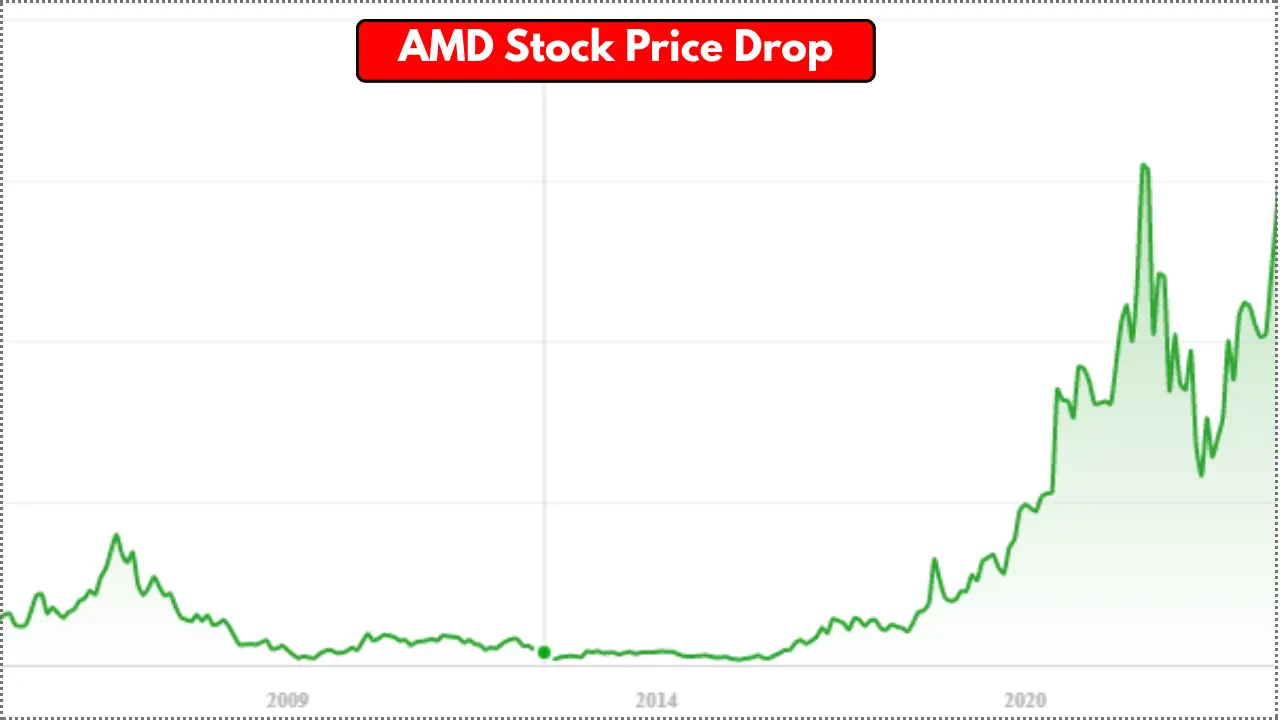AMD Stock Price: AMD investors woke up to unsettling news as shares tumbled significantly in today’s trading session. The semiconductor giant’s stock price plunged following disappointing developments in the AI chip market and strategic partnerships. Wall Street analysts scrambled to reassess their positions as the chipmaker faces mounting pressure from competitors. Understanding today’s dramatic price movement requires examining recent corporate decisions and broader market dynamics affecting the technology sector.
What’s the Latest AMD Stock Price Today?
AMD shares closed at $118.45, down 7.2% from yesterday’s closing price of $127.68. The stock opened lower at $124.30 and experienced volatile trading throughout the session. Trading volume spiked to 89 million shares, significantly above the average daily volume of 52 million. The day’s low touched $116.80 before modest recovery attempts. Nasdaq real-time data showed sustained selling pressure across multiple trading hours.
Year-to-date, AMD stock remains down 12% despite previous gains in the AI chip sector. The current price represents a 28% decline from its 52-week high of $164.50 reached last July. Market capitalization stands at approximately $191 billion following today’s selloff. Institutional investors hold 68% of outstanding shares, adding weight to today’s downward movement. Pre-market and after-hours trading suggest continued volatility ahead.
Why Is AMD Stock Dropping Right Now?
The primary catalyst for today’s decline stems from AMD losing a major contract to supply AI chips to a prominent technology partner. Reports indicate the company failed to meet performance benchmarks required for next-generation artificial intelligence applications. Competitor Nvidia capitalized on AMD’s setback, securing exclusive deals with major cloud service providers. Supply chain challenges and manufacturing delays further eroded investor confidence in AMD’s execution capabilities.
Additionally, broader market concerns about semiconductor demand contributed to selling pressure. Analysts at major investment firms downgraded AMD’s rating from “buy” to “hold” citing margin compression and competitive pressures. Quarterly earnings projections were revised downward by 8-12% across multiple financial institutions. Concerns about data center spending slowdown affected all chip manufacturers. Yahoo Finance reported institutional selling accelerated during afternoon trading.
How Did the OpenAI Deal Impact AMD’s Stock?
Market speculation suggested AMD was positioning itself as a secondary AI chip supplier to OpenAI and Microsoft partnerships. However, recent developments confirm Nvidia retained its dominant position in supplying GPUs for AI training workloads. AMD’s MI300X accelerators, despite technical capabilities, failed to win significant market share in the generative AI boom. This strategic setback damaged AMD’s growth narrative centered around AI chip revenue.
The lost opportunity represents billions in potential revenue over the next three years. Investors had priced in aggressive AI chip adoption, making today’s reality check particularly painful. AMD’s management previously guided for substantial AI-related revenue contributions, now appearing overly optimistic. The company must now rely more heavily on traditional CPU sales and gaming segments. This strategic pivot away from AI dominance disappointed growth-focused investors.
Should You Buy or Sell AMD Based on Today’s Movement?
Long-term investors should consider AMD’s fundamental strengths before making hasty decisions based on single-day movements. The company maintains strong positions in PC processors, gaming consoles, and data center CPUs. Current valuation at 35 times forward earnings appears reasonable compared to historical averages. Today’s decline may present buying opportunities for patient investors with multi-year horizons. Dollar-cost averaging into positions during volatility often proves effective.
However, short-term traders should exercise caution until technical indicators stabilize and clear support levels emerge. The stock breaking below $120 could trigger additional algorithmic selling. Wait for confirmed reversal patterns before establishing new positions. Consider portfolio diversification across multiple semiconductor companies rather than concentrated AMD exposure. Consult qualified financial advisors before making investment decisions.
Also Read:
Tesla Share Price: Your Complete Guide to TSLA Stock Performance
Perplexity Comet AI Browser Free: Game-Changer vs Chrome & Firefox — Full Review!
Disclaimer: This article is for informational purposes only and does not constitute financial advice. Stock prices and market conditions change rapidly. Please conduct thorough research and consult licensed financial professionals before making investment decisions.













